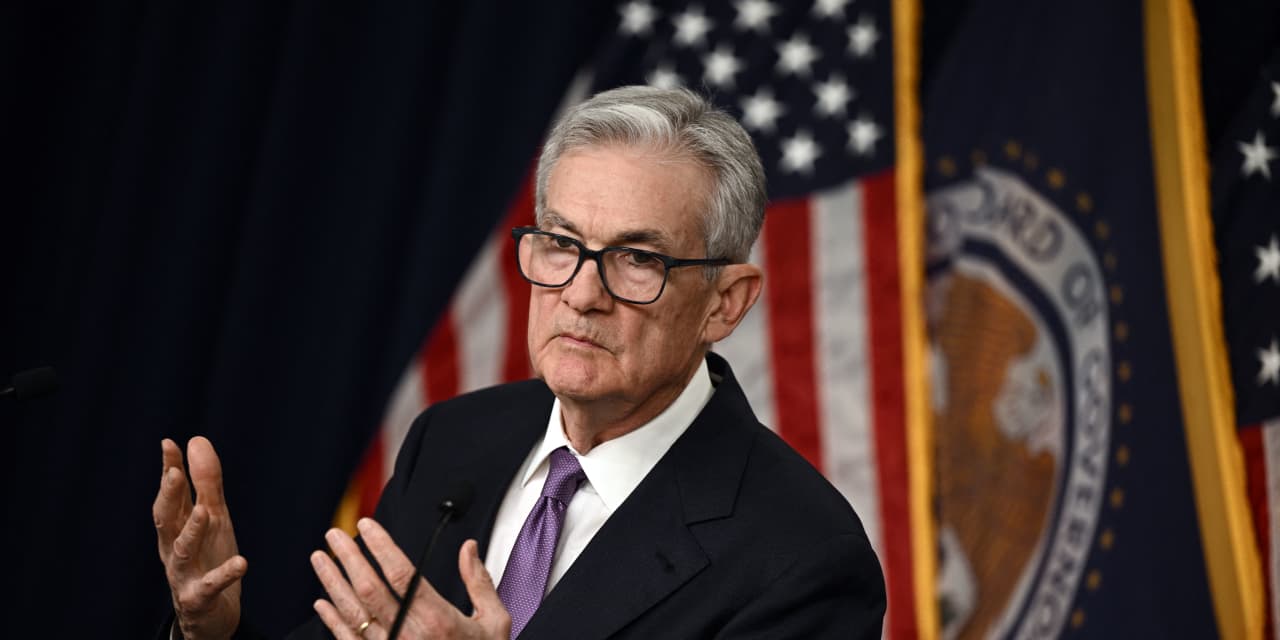Bond giant Pimco sees upside in the estimated $9 trillion agency mortgage-bond market as the Federal Reserve begins thinking about when to stop shrinking its balance sheet.
Mike Cudzil, a fixed-income portfolio manager at Pimco, expects a more favorable backdrop for mortgage bonds to take shape this year, especially if the Fed cuts rates and no longer lets its balance sheet decline.
Agency mortgage-bonds have rallied less than other risk assets after extreme bond-market volatility took hold of markets when Silicon Valley Bank collapsed in March and again in October as the Fed signaled it may need to keep rates higher for longer.
The recovery has been largely held back because the Fed and banks — two of the sector’s biggest players — have been all but sidelined since U.S. financial conditions have tightened.
Read: Homes are expensive right now, but these mortgage bonds look cheap
After a strong fourth quarter, weakness has again gripped the bond market, with the ICE BofA US Mortgage Backed Securities index at a negative 1.6% return on the year through Friday, while several popular exchange-traded funds in the sector also show negative returns to begin 2024, according to FactSet. The iShares MBS ETF
MBB
was down 1.6% on the year through Friday.
Cudzil thinks there’s room for improvement in mortgage bonds, especially if the Fed’s large foothold in the U.S. bond market stabilizes, which should help steady benchmark rates. Banks in the fourth quarter also signaled that some lenders have started coming back as buyers.
“It’s one of the most attractive assets in fixed-income, relative to its own history, but also other assets, including investment-grade corporates,” Cudzil said of agency mortgage bonds, adding that Pimco is overweight the sector. The fixed-income behemoth had $1.86 trillion of assets under management at year-end.
His optimism has grown in recent weeks after several Fed officials said they wanted to avoid the mistake of keeping financial conditions tight for too long, particularly as excess liquidity drains from the financial system as the central bank’s balance sheet shrinks.
See: Fed’s Logan backs first slowing, then gradually ending, balance-sheet runoff
As one proxy of excess liquidity, the Fed’s overnight reverse repo facility has dropped lately to about $600 billion from a peak of $2.6 trillion about a year ago.
While Cudzil said there still is “a fair amount of cash in the system,” he now also expects the Fed to dial back quantitative tightening in the second half of this year, with it possibly finishing by year’s end, which “should be a positive for all fixed-income assets.”
To achieve a smaller balance sheet, the Fed each month has been letting up to $60 billion in Treasurys and up to $35 billion in agency mortgage-backed securities mature and roll off its balance.
Cudzil’s base case expectations is for the Fed to first let fewer Treasurys roll off each month, until runoff ends, while caps on its mortgage reductions likely remain steady. Reinvestments that help stabilize the size of the balance sheet would be going back into Treasurys.
A hiccup to its mortgage-bond reduction plans has been the surge in rates from pandemic lows, which has stalled the housing market as few homeowners sell or refinance, and slows the pace of early bond repayments.
Read: Home sales sink to a 29-year low in 2023
The Fed’s balance sheet since 2022 has still fallen to about $7.7 trillion, even though it remains well above its roughly $4 trillion level before the pandemic hit nearly four years ago.
Fed officials have indicated they eventually want to exit mortgage bonds. The central bank’s huge exposure currently sit around $2.4 trillion.
Barclays analyst Joseph Abate thinks the Fed could be done tapering its runoff in June or July, which could sees its balance sheet hit a low of $7.2 trillion, and for its size to then stabilize.
Cudzil at Pimco thinks that’s a reasonable estimate, and envisions a reserves regime, with a buffer, that would be roughly in the $2.5 trillion to $3 trillion range.
“The real risk is the one that’s not priced into the market,” Cudzil said, adding that a reacceleration of the U.S. economy or inflation could still pose threats.
“That would be something quite disruptive and challenging for agency MBS,” he said.
Stocks
SPX
DJIA
were higher on Friday, heading mostly for weekly gains, while the 10-year Treasury yield
BX:TMUBMUSD10Y
was back up to 4.17%.
Read the full article here







